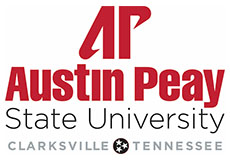 Clarksville, TN – A new study led by Dr. Zachary Barnes, an assistant professor in the Eriksson College of Education at Austin Peay State University (APSU), revealed that U.S. students from higher socioeconomic status (SES) families are more likely to score higher in science than their lower-income peers.
Clarksville, TN – A new study led by Dr. Zachary Barnes, an assistant professor in the Eriksson College of Education at Austin Peay State University (APSU), revealed that U.S. students from higher socioeconomic status (SES) families are more likely to score higher in science than their lower-income peers.
The study, published in the journal Infant and Child Development, suggests interventions are needed to improve science instruction and engagement for disadvantaged students beginning in elementary school. For researchers, socioeconomic status includes household income, parents’ education, and occupations.
Gaps Appear in Kindergarten and Persist Through Elementary School
Using data from a nationally representative sample, researchers found science achievement gaps based on SES exist as early as kindergarten. While students from higher SES families scored universally higher in science, scores for students from lower SES families varied across the spectrum. Researchers sourced the data from the Early Childhood Longitudinal Study, Kindergarten Class of 2010-11.
Collected by the National Center for Education Statistics, the analyzed data tracks public and private school students from diverse socioeconomic and racial/ethnic backgrounds from kindergarten through fifth grade.
“There is limited science teaching happening in elementary schools, as the majority of time is focused on math and reading,” Barnes said. “Because of that, we see the effects of SES on science achievement.”
The study found that science achievement gaps persisted as students progressed through elementary school.
“The results of this study show that we can assume that students from higher SES families are going to score higher in science during elementary school, even as early as kindergarten,” Barnes said. “But that’s not the case for those in poverty.”
Targeted Interventions Needed
The findings suggest interventions should target improving science instruction and engagement for lower SES students as early as possible. Barnes noted that science instruction time is limited, especially in early grades.
“As the country focuses more on STEM education, it’s critical that we lay a strong foundation of science knowledge to support all students,” Barnes said. “This means that elementary schools must prioritize teaching science so that all students, including those in poverty, can experience gains in their science knowledge. Those who struggle in science in elementary school continue to stay behind for years to come.”
Barnes suggests enrichment programs and hands-on science activities outside the classroom could help close these gaps. Many activities are offered for free or at low cost during school breaks.
However, many summer camps and day trips accessed by higher SES families are unavailable to disadvantaged students. These findings put more responsibility on schools to ensure equal opportunities and provide more engaging STEM resources.
“Other researchers, using the same national data, found that home enrichment activities over summer break are linked to higher science achievement,” Barnes said. “These experiences, such as going to zoos, aquariums, and museums, can build background knowledge that will help students with science achievement.”
Barnes was awarded an Austin Peay State University research support grant, which aided in the study’s completion. A former Metro Nashville special education teacher, he also researches reading development and executive function.
Barnes can be reached at barnesz@apsu.edu.



